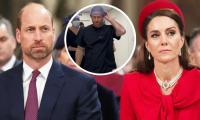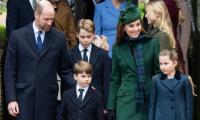LAHORE: Former premier Shinzo Abe is not the first Japanese ruler to be assassinated during the last 100 years or so. Otherwise known to be quite non-violent and politically tolerant, Japan has also had an un-envious history when it comes to high-profile assassinations and bids on lives of eminent personalities.
Here follows a brief detail of a few incidents in this context: In November 1921, the-then Japanese Prime Minister, Takashi Hara, was stabbed to death by a right-wing railroad switchman, Nakaoka, at Tokyo Railway Station. The slayer had accused the first commoner to be appointed prime minister of being corrupt.
He was also critical of Premier Hara’s handling of the Siberian intervention, which led to growing animosity between the military and government. The killer Nakaoka was sentenced to life imprisonment, but served just 13 years.
In November 1930, another Japanese ruler, Osachi Hamaguchi, was shot in the stomach at the Tokyo Railway Station again. Known as the “Lion Prime Minister,” Osachi was just about to board the express train when the perpetrator, Tomeo Sagoya, aimed his weapon straight at his belly.
The culprit was one of many right-wingers incensed by the-then Japanese PM’s decision to ratify a disarmament treaty described as an infringement of the military’s “right of supreme command.”
Premier Osachi survived the attack but never fully recovered from his injuries. He passed away on August 26, 1931, eight months after the assassination attempt. History of the Land of the Rising Sun, as Japan is known, reveals that Emperor Hirohito, the country’s longest reigning emperor, had survived three assassination attempts in the 1920s and 1930s. The assailants were all either Korean or Japanese.
The first occurred on December 27, 1923 when an offender, Daisuke Namba, had fired a pistol at the carriage of the-then Prince Regent, shattering the window. Hirohito was unharmed but his chamberlain was injured.
The felon was angered by the murders of Japanese anarchists and Koreans during the panic of the Great Kanto Earthquake. Though he said he acted rationally, the 24-year-old was proclaimed insane to the public. After being condemned to death, he yelled, “Long live the Communist Party of Japan.”
The second time Hirohito was unsuccessfully targeted was in 1925. The third attempt on Hirohito’s life was by Korean Patriotic Legion member, Lee Bong-Chang, in 1932. Lee was convicted on September 30, 1932 and was executed.
In February 1932, attackers had misidentified the-then PM, Keisuke Okada, and instead murdered his brother-in-law. A future PM, Kantaro Suzuki, had also survived a life bid, though the bullet from the attack remained inside his body for the rest of his life.
According to “Tokyo Weekender.com,” on May 15, 1932, some 11 young naval officers had shot the country’s sitting Prime Minister, Tsuyoshi Inukai. Attempting a coup d’état, their aim was to remove the democratic government in favor of military control.
The group also planned the assassination of Charlie Chaplin, globally-famous British comic actor and filmmaker in the era of silent films. Believing him to be an American, the attackers hoped his death would lead to a war with the United States.
Touring Japan, Charlie was scheduled to attend a welcome party on the evening of the May 15. He suddenly changed his schedule and instead went to watch a Sumo wrestling bout with the-then PM’s son. That last-minute plan alteration saved his life.
On October 12, 1960, a schoolboy called Otoya Yamaguchi had gone on to stab Japan Socialist Party leader, Inejiro Asanuma, with a foot-long traditional Japanese Samurai sword. The deceased leader, who was taking part in a televised political debate, had controversially given a speech in Beijing describing the United States as the “shared enemy of China and Japan.”
He was pronounced dead at the scene. The school uniform-wearing assailant smiled as he was taken away by the police. Around 1,000 people were in the audience including Prime Minister Hayato Ikeda.
The assassin committed suicide in his juvenile detention cell three weeks after the incident. In 2002, Kokii Ishii, author of a famous book 'Japan’s Secret Checkbook: The Truth about the Financial Interests That Will Destroy the Nation,’ was killed when he was about to expose political corruption and reveal information that was being hidden from the public.
According to a research paper of the University of Pennsylvania, a future Russian Emperor, Nicholas II, had narrowly defeated death in 1891 during his visit to Japan. A Japanese policeman had actually tried to assassinate the Russian Crown Prince Nicholas.
Images showed chopper´s landing skids protruding from river beside Manhattan´s West Side Highway
Senator clarified that Khan receives list of proposed visitors and retains sole authority to approve or reject meetings
Police officials said mother of missing brothers had been called to record her statement
Currently, four accused including Niaz Badami have been arrested
Even railway stations could be considered as part of Defence of Pakistan, says Justice Mandokhail
MWM leader asserted that court orders were being ignored and judiciary held no value







